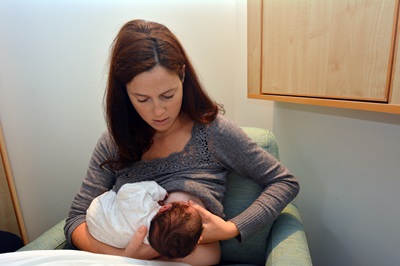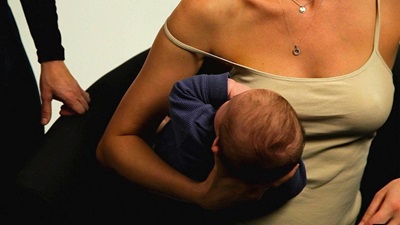Breastfeeding is a wonderful bonding experience and provides optimum nutrition to newborns. However, successful breastfeeding often depends on finding the right breastfeeding position that is comfortable and effective for both the mother and the baby.
In this article, we will explore a variety of breastfeeding positions that every new mom should know. These positions can alleviate common breastfeeding challenges and ensure a positive breastfeeding experience.
1. The Cradle Hold

The cradle hold is perhaps the most common breastfeeding position. It involves holding the baby in your arms, with the baby’s head resting on the crook of your elbow. Here’s how to do it:
Steps to Follow
- Sit in a comfortable chair with good back support.
- Hold your baby’s head with your hand, ensuring their nose is in line with your nipple.
- Support your baby’s body with your forearm, allowing them to latch onto your breast.
Advantages
- It’s a natural and intuitive position.
- Allows for eye contact and bonding with your baby.
- Works well for breastfeeding in public discreetly.
2. The Cross-Cradle Hold

The cross-cradle hold is similar to the cradle hold but with a slight variation. Instead of using the arm on the same side as the breast, you use the opposite arm to support the baby’s head and body.
Steps to Follow
- Sit comfortably and use your opposite hand to support your baby’s head and neck.
- Bring the baby to your breast, ensuring their nose is in line with your nipple.
- Support your baby’s body with your forearm on the same side as the breast.
Advantages
- Provides better control and positioning for latching.
- Useful for newborns who need more head support.
- Helps with breast engorgement as it allows for better drainage of milk.
3. The Football Hold

The football hold, also known as the clutch hold, is particularly useful for mothers who have had a cesarean section or twins. In this position, the baby’s legs are tucked under the mother’s arm like a football.
Steps to Follow
- Sit in a comfortable chair with back support.
- Hold your baby’s head with your hand, ensuring their nose is in line with your nipple.
- Support your baby’s body along your side, like a football.
Advantages
- Offers more control over the baby’s head and latch.
- Ideal for mothers with large breasts or twin babies.
- Minimizes pressure on the abdomen after a C-section.
4. The Side-Lying Position

The side-lying position is a lifesaver for mothers who want to breastfeed while lying down, especially during nighttime feedings. Here’s how to do it:
Steps to Follow
- Lie down on your side with your baby facing you.
- Position your baby’s mouth in line with your nipple.
- Use your lower arm to support your baby’s head and upper body.
Advantages
- Ideal for night feedings as it allows both mother and baby to rest.
- Reduces the risk of postpartum back pain.
- Promotes skin-to-skin contact and bonding.
5. The Laid-Back or Biological Nurturing Position

The laid-back position, also known as biological nurturing, mimics the natural way babies breastfeed when placed skin-to-skin on their mother’s chest. This position involves reclining in a semi-reclined or laid-back posture.
Steps to Follow
- Find a comfortable and supportive surface to recline on, like a bed or couch.
- Place your baby on your chest, tummy down.
- Allow your baby to find the breast and latch on their own.
Advantages
- Encourages a more natural and relaxed breastfeeding experience.
- Helps babies self-attach and self-regulate their feeding.
- Can improve baby’s ability to root and latch effectively.
6. The Koala Hold

The koala hold, also known as the upright breastfeeding position, is beneficial for babies who experience reflux or have difficulty latching in traditional positions.
Steps to Follow
- Sit comfortably with your baby upright against your chest.
- Hold your baby with their chest against yours.
- Support your baby’s head and neck, allowing them to latch onto your breast.
Advantages
- Reduces the risk of reflux as gravity helps keep milk down.
- Facilitates better airflow for babies with nasal congestion.
- Suitable for older babies who enjoy looking around during feeds.
7. The Double Clutch or Twin Hold

If you’re a mother of twins, the double clutch or twin hold can be a game-changer. It involves feeding both babies simultaneously, one on each breast. Here’s how to do it:
Steps to Follow
- Use pillows to support your back and arms, creating a comfortable feeding station.
- Hold one baby in the football hold on one side and the other in the cradle hold on the opposite side.
- Ensure both babies are well-supported and have a good latch.
Advantages
- Saves time by feeding both babies at once.
- Provides an opportunity for twin bonding and synchrony.
- Helps maintain milk supply when breastfeeding multiples.
Final Thoughts
Breastfeeding is a personal journey, and finding the right breastfeeding position can make all the difference in ensuring a successful and enjoyable experience for both the mother and the baby. Each of the breastfeeding positions discussed in this article offers its own set of advantages and can be adapted to suit your unique needs and preferences.
Frequently Asked Questions (FAQs)
1. Why are breastfeeding positions important?
Breastfeeding positions are crucial because they can significantly affect your comfort and your baby’s ability to latch effectively. The right position can make breastfeeding easier and more enjoyable for both you and your baby.
2. How do I know which breastfeeding position is best for me and my baby?
The best position often depends on your comfort, your baby’s age and size, and any specific breastfeeding challenges you may be facing. It’s a good idea to try different positions to see which one works best for you both.
3. Is there a specific position that’s best for newborns?
The cradle hold and cross-cradle hold are often recommended for newborns because they provide good head and neck support, making it easier for them to latch.
4. What if my baby has trouble latching?
If your baby has difficulty latching, you may want to try the cross-cradle hold or laid-back position, which offer better visibility and control when helping your baby latch.
5. Can I switch between different breastfeeding positions during a single feeding session?
Yes, you can switch positions during a feeding session if it helps you and your baby. Some mothers find that changing positions can help prevent nipple soreness and ensure both breasts are thoroughly drained.
6. How can I make breastfeeding more comfortable?
To make breastfeeding more comfortable, use pillows to support your back and arms, ensure a good latch, and maintain proper positioning. A lactation consultant can provide personalized tips for your comfort.
7. Can I breastfeed lying down?
Yes, you can breastfeed lying down using the side-lying position, which can be particularly convenient for nighttime feedings when both you and your baby want to rest.
8. Are there specific positions for mothers with large breasts or twins?
Yes, the football hold and double clutch hold can be especially helpful for mothers with larger breasts or twins, as they provide better support and control.



